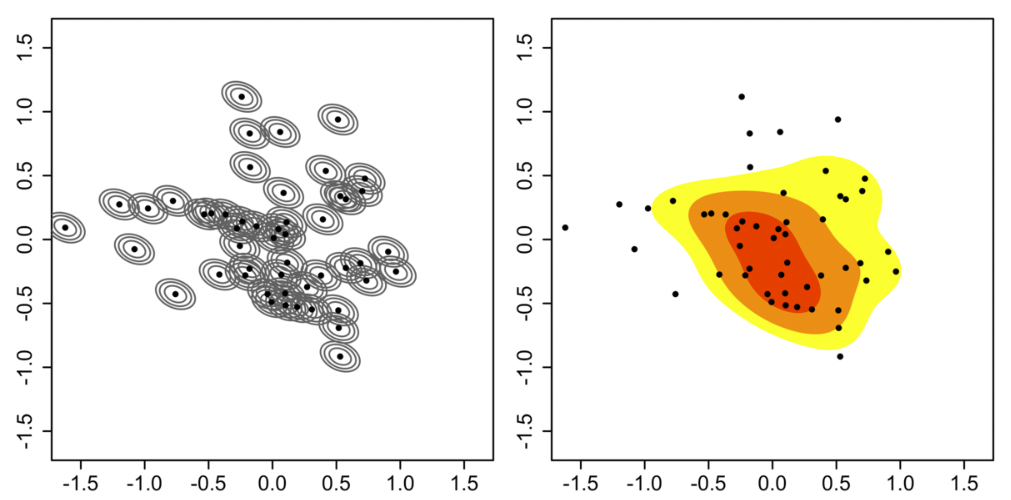
Table of Contents
What is synthetic data?
Synthetic data is information that is created artificially via computer simulations rather than gathered from real-world events.
Synthetic data has been traditionally used to validate mathematical models and as a stand-in for operational or production data.
However, synthetic data is becoming more prevalent in AI training because it can be used without privacy restrictions, can simulate nearly any condition, and is often immune to statistical problems such as item nonresponse and other logical constraints.
Introduction to Synthetic Data
Synthetic data generation
Synthetic data generation is the process of using artificial intelligence (AI) to create data that looks and feels real but is not.
This data can be used for a variety of purposes, such as training machine learning models or testing software.
How is synthetic data generated?
Synthetic data can be generated using a variety of methods, such as:
- Using mathematical models to generate data that looks similar to real data.
- Using generative adversarial networks (GANs) to create data that looks and feels real but is not.
- Using natural language processing (NLP) to generate text that sounds like it was written by a human.
Generating synthetic data has become more popular over time and is considered a “breakthrough technology.”
How to Make Synthetic Data – Synthetic Data Generation for Machine Learning (ML)
What are the benefits of synthetic data?
There are several benefits to using synthetic data:
- It can be generated without privacy restrictions, which allows for more realistic datasets.
- It can simulate nearly any condition, which is useful for testing software or training machine learning models.
- It is often immune to statistical problems, such as item nonresponse and other logical constraints.
What are the challenges of synthetic data?
The main challenge of synthetic data is that it can be difficult to generate data that looks and feels realistic.
If the synthetic data is not realistic, it may not be useful for its intended purpose.
What are some applications of synthetic data?
Some applications of synthetic data include:
- Training machine learning models
- Testing software
- Validating mathematical models
- Creating stand-ins for operational or production data What are some companies that use synthetic data?
Some companies that use synthetic data include:
- Uber
- Lyft
- Airbnb
- Doordash
What are some ethical considerations of synthetic data?
As synthetic data becomes more prevalent, there are a few ethical considerations to keep in mind, such as:
- How will the use of synthetic data impact society and the individuals within it?
- Who will have access to synthetic data? And how will it be used?
- What are the implications of using synthetic data for AI training?
These are just a few of the ethical considerations of synthetic data. As the use of synthetic data becomes more widespread, more considerations may arise.
Synthesized data
Synthesized data is used interchangeably with synthetic data.
It is a term for data that has been artificially generated by a computer. This is in contrast to real-world data, which comes from actual events.
Synthetic data has many applications, but it is most commonly used in AI training and software testing.
There are several benefits to using synthetic data, but the main challenge is generating data that looks realistic. Synthetic data can be generated using mathematical models, generative adversarial networks (GANs), or natural language processing (NLP).
As synthetic data becomes more prevalent, there are a few ethical considerations to keep in mind, such as the impact on society and individuals, who will have access to synthetic data, and the implications of using synthetic data for AI training.
Synthetic Data: Future of Data Science and AI
Synthesis AI
Synthesis AI is a technology that creates data that looks and feels real but is not. It is used to generate synthetic data.
With synthesis AI the main challenge is generating data that looks realistic.
What are the benefits of synthesis AI?
The benefits of synthesis AI include:
- The ability to generate data that looks and feels real but is not.
- The ability to create data that is not biased.
- The ability to create data that is representative of the population.
What are the challenges of synthesis AI?
The challenges of synthesis AI include:
- Generating data that looks realistic.
- Ensuring that the synthetic data is not biased.
- Ensuring that the synthetic data is representative of the population.
What are the implications of using synthetic data?
The implications of using synthetic data include:
- How will the use of synthetic data impact society and the individuals within it?
- Who will have access to synthetic data? And how will it be used?
- What are the implications of using synthetic data for AI training?
Synthetic datasets
Synthetic datasets are used to train machine learning models. A synthetic dataset is a dataset that has been artificially generated by a computer.
This is in contrast to real-world data, which comes from actual events.
Synthetic data has many benefits, but the main challenge is generating data that looks realistic.
Synthetic data can be generated using mathematical models, generative adversarial networks (GANs), or natural language processing (NLP).
As synthetic data becomes more prevalent, there are a few ethical considerations to keep in mind, such as the impact on society and individuals, who will have access to synthetic data, and the implications of using synthetic data for AI training.
Synthetic data for machine learning and deep learning
Machine learning and deep learning is a type of artificial intelligence that allows computers to learn from data.
In order to train machine learning models, data is needed. This data can be real-world data or synthetic data.
Synthetic data is a term for data that has been artificially generated by a computer.
This is in contrast to real-world data, which comes from actual events.
Synthetic data has many benefits, but the main challenge is generating data that looks realistic.
Synthetic data can be generated using mathematical models, generative adversarial networks (GANs), or natural language processing (NLP).
What’s next for synthetic data
Synthetic data is part of the Alternative AI Training Datasets trend.
Collecting real-life data to train AI is often expensive and time-consuming.
Additionally, much of this real-world data has collection and accuracy issues.
This is why AI developers are increasingly turning to alternative AI training data (such as synthetic data.)
In fact, Gartner forecasts that synthetic data will become the primary data source used to train AI models by 2030.
Synthetic data – FAQs
What is synthetic data?
Synthetic data is a term for data that has been artificially generated by a computer.
This is in contrast to real-world data, which comes from actual events.
Synthetic data has many benefits, but the main challenge is generating data that looks realistic.
Synthetic data can be generated using mathematical models, generative adversarial networks (GANs), or natural language processing (NLP).
How to create synthetic data?
There are three main ways to generate synthetic data: mathematical models, generative adversarial networks (GANs), or natural language processing (NLP).
What is synthetic data generation?
Synthetic data generation is the process of artificially creating data.
This is done using mathematical models, generative adversarial networks (GANs), or natural language processing (NLP).
The goal of synthetic data generation is to create data that looks realistic.
Why synthetic data?
Synthetic data has many benefits, including the ability to train machine learning models without needing real-world data.
Additionally, synthetic data can be generated in large quantities and can be controlled by the creator.
What are the ethical concerns with synthetic data?
Some ethical concerns with synthetic data include the impact on society and individuals, who will have access to synthetic data, and the implications of using synthetic data for AI training.
What is the difference between synthetic data and real data?
The main difference between synthetic data and real data is that synthetic data is artificially generated by a computer while real-world data comes from actual events.
Synthetic data has many benefits, but the main challenge is generating data that looks realistic.
What are the benefits of synthetic data?
Some benefits of synthetic data include the ability to train machine learning models without needing real-world data, the ability to generate data in large quantities, and the fact that synthetic data can be controlled by the creator.
How to generate synthetic data in Python?
There are a few different ways to generate synthetic data in Python.
One way is to use the Faker library. Another way is to use the Synthy library.
How to generate synthetic data in R?
The best way to generate synthetic data in R is to use the SynthPop package.
What is a synthetic dataset?
A synthetic dataset is a dataset that has been artificially generated by a computer.
This is in contrast to real-world data, which comes from actual events. Synthetic data has many benefits, but the main challenge
What is a GAN?
GAN stands for “generative adversarial networks.” GANs are a type of neural network used to generate synthetic data.
A GAN is a type of artificial intelligence that can be used to generate synthetic data.
GANs work by training a generator network to generate data that looks realistic.
GANs for Tabular Synthetic Data Generation
What is an NLP?
An NLP is a type of artificial intelligence that can be used to generate synthetic data.
NLP works by training a model to generate data that looks realistic.
What is the difference between a GAN and an NLP?
The main difference between a GAN and an NLP is that a GAN can generate data that looks realistic while an NLP can only generate data that looks realistic.
What is the difference between synthetic data and generated data?
The main difference between synthetic data and generated data is that synthetic data is artificially created by a computer while generated data comes from actual events.
Synthetic data has many benefits, but the main challenge is generating data that looks realistic.
How to use synthetic data?
Synthetic data can be used for a variety of purposes, including training machine learning models, testing algorithms, and creating mock datasets.
What are some applications of synthetic data?
Some applications of synthetic data include training machine learning models, testing algorithms, and creating mock datasets.
What are simple synthetic data generation approaches?
Some simple synthetic data generation approaches include using the Faker library or the Synthy library.
What is a more complex synthetic data generation approach?
A more complex synthetic data generation approach is to use a GAN.
Summary – Synthetic Data
Synthetic data is a dataset that has been artificially generated by a computer.
The main difference between synthetic data and real-world data is that synthetic data is artificially generated while real-world data comes from actual events.
Synthetic data has many benefits, including the ability to train machine learning models without needing real-world data.
Additionally, synthetic data can be generated in large quantities and can be controlled by the creator.
However, there are also some ethical concerns with synthetic data, such as the impact on society and individuals, who will have access to synthetic data, and the implications of using synthetic data for AI training.


![Backwards 3: How to Type "Ɛ" [EASY]](https://softwareblade.com/wp-content/uploads/2022/02/Screen-Shot-2022-02-19-at-9.03.25-PM-150x150.png)